Contribute
|
On Occasion Of 70th Year Of Aggression Of China Into Tibet: Big Corporations Doing Business With China To Be Indirectly Blamed? |
Ankush Bhandari
03/05/2021
On Occasion Of 70th Year Of Aggression Of China Into Tibet: Big Corporations Doing Business With China To Be Indirectly Blamed? (Part 1 Of 3)
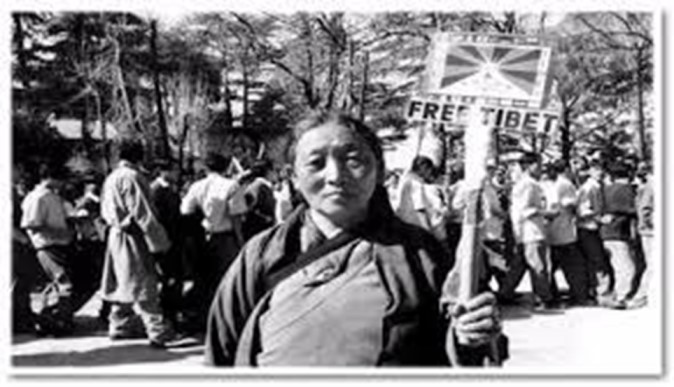
Buddhist Genocide in Tibet: -
While much of the international community has focused on abuses against the Uighur Muslims in the Chinese province of Xingang, the human rights horrors against Buddhists in Tibet – seven decades-long conflict, have dropped from the limelight.
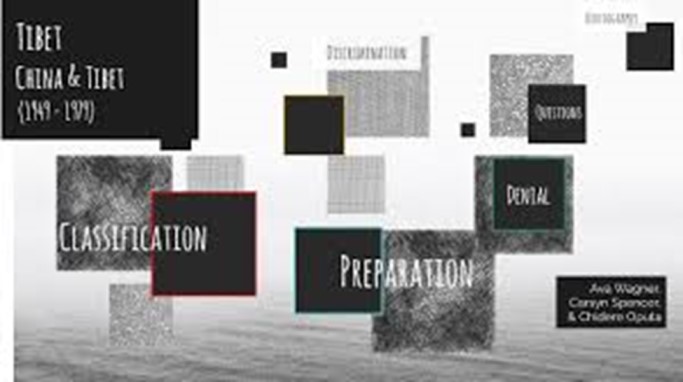
What is Genocide: -
The crime of genocide is defined in international law in the Convention on the Prevention and Punishment of Genocide.
“Article II: In the present Convention, genocide means any of the following acts committed with intent to destroy, in whole or in part, a national, ethnical, racial or religious group, as such:
(a) Killing members of the group;
(b) Causing serious bodily or mental harm to members of the group;
(c) Deliberately inflicting on the group conditions of life calculated to bring about its physical destruction in whole or in part;
(d) Imposing measures intended to prevent births within the group;
(e) Forcibly transferring children of the group to another group.
Article III: The following acts shall be punishable:
(a) Genocide;
(b) Conspiracy to commit genocide;
(c) Direct and public incitement to commit genocide;
(d) Attempt to commit genocide;
(e) Complicity in genocide.
The Genocide Convention was adopted by the United Nations General Assembly on 9 December 1948. The Convention entered into force on 12 January 1951. More than 130 nations have ratified the Genocide Convention and over 70 nations have made provisions for the punishment of genocide in domestic criminal law. The text of Article II of the Genocide Convention was included as a crime in Article 6 of the 1998 Rome Statute of the International Criminal Court [1]
Genocide In Tibet by Chinese Communist Army: -
China is still a regime both authoritarian and totalitarian that violates not only the rights of Tibetan and Mongolian Buddhists and Muslim Uighur but also its own Chinese citizens— increasing the sense of terror among the people and repressing any dissent. Some very heartbreaking attention-grabbing facts:
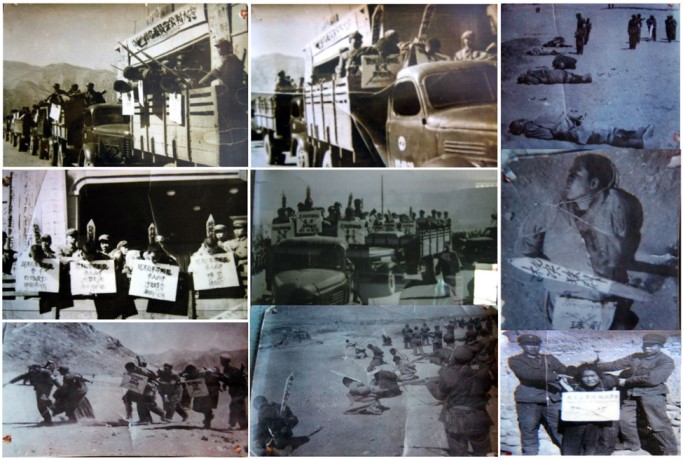
Mass genocide against 1.2 million people of Tibet
· 1.2 million Tibetans have been slaughtered since the Chinese occupation.
· Over six thousand monasteries and temples and historical structures looted and destroyed beyond repair.
· Tibet’s ecosystem has been severely damaged: vast regions of forest have been removed whilst numerous wildlife species decimated just for food by the Chinese.
· Tibet’s substantial mineral resources have been pillaged and continue to this date.
· One-quarter of China’s nuclear missiles are stationed in Tibet.
· China is using Tibet as a dumping ground for nuclear waste.
· Some four hundred thousand Chinese troops are based in Tibet.
· Over 8 million Chinese colonists have moved into Tibet in a step to dominate the Tibetans.
· A secret Chinese document in 1992 revealed plans to swamp the Tibetan population with even more Chinese.
· Forced abortions, many in late pregnancy, and sterilization of Tibetan women are not uncommon.
· Hundreds of Tibetan political prisoners are being held including the Panchen Lama.
· Over 150,000 Tibetans are in exile worldwide, including India and Nepal.
· In 1959, the International Commission of Jurists found that genocide had been committed in Tibet.
· Nomads are forced to end their traditional way of life.
· Chairman Mao wanted to blow-up the Potala – as they did with the Chakpori – to break the Tibetan spiritual spirit.
· Forced to denounce His Holiness the Dalai Lama, their own spiritual and temporal leader, his chosen Panchen Lama Gedun Choekyi Nyima; Tibetans must pledge their allegiance to the Chinese government. Failure to do so can result in imprisonment or other forms of severe punishment. Celebrating the birthday of His Holiness the Dalai Lama, commemorating anniversaries or festivals, and possessing an image of His Holiness the Dalai Lama or Tibetan flag is still illegal in Tibet today.
· More than 80% of Tibetans in Tibet still live below the poverty line. Trulku Tenzin Delek Rinpoche’s case is one example of the human rights abuses being carried out by the regime on the roof of the world[1]
Cultural Genocide :-
Tibetan schools are forced to teach students in Chinese as the primary language rather than Tibetan. And just recently, Chinese authorities ordered Tibetans to remove their beautiful prayer flags from villages and hilltops. Living under the repressive rule of the Chinese Communist Party, Tibetans have virtually no freedom of religion, freedom of speech, or any of the other basic freedoms that no government has the right to take away,†Tsering explained.
"Tibet is one of the worst human rights crises in the world today. More than 150 Tibetans have self-immolated since 2009, lighting their own bodies on fire to protest China's oppression," Bhuchung K. Tsering, vice president of the International Campaign for Tibet, told Fox News[2]
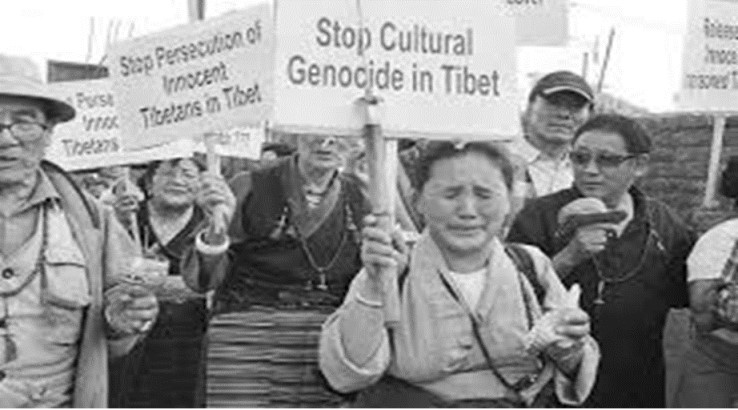
Intense efforts of Scorsese and Jean Jacques Annaud, director of “Seven Years in Tibet,†millions more people will learn of Tibet’s very existence.
The third report by the International Commission of Jurists (ICJ) titled: “Tibet: Human Rights and the Rule of Law.†The new 370-page report documents the 1995 incarceration of the Panchen Lama, an 8-year-old child; the 1997 extension of martial law under the “Spiritual Civilization Campaign,†which labels Buddhism a “foreign culture†to be eradicated; intensive “reeducation†of the Buddhist clergy; population transfer; widespread torture and detention; extrajudicial and arbitrary executions. The report calls for a “referendum to be held in Tibet under United Nations supervision to ascertain the wishes of the Tibetan people.[3] “
Human Genocide: -
The practices which followed by Chinese Communist Army included but not limited to
(a) massive use of forced labor resulting in the deaths of thousands of Tibetans;
(b) forced sterilization of the women;
(c) destruction of agricultural lands and irrigation systems creating widespread famine;
(d) destruction of trade and commerce, devastating the livelihoods of thousands of Tibetans; systematic religious persecution;
(e) forced indoctrination into Communist ideology;
(f) large-scale aerial bombing and massacres; removal and deportation of males between the ages of 15 and 60 to prevent protests;
(g) confiscation of property from monasteries, private individuals, and former Tibetan officials;
(h) imprisonment, deportation, and murder of thousands of people in the resistance movement;
(i) transfer of Han majority people into the region;
(j) extrajudicial and arbitrary executions;
(k) intensive re-education; and widespread torture.
In the July of 1959, ICJ Secretary-General Jean-Flavien Lalive wrote: "The danger in such cases as that of Tibet is of a feeling of impotence and powerlessness overcoming people in the face of a fait accompli. . . . What happened in Tibet yesterday may happen in our own countries tomorrow . . . {but} ideas will penetrate where bullets will not[4]"
Environmental Genocide: -
The report “Tibet: Environment and Development 1992â€, compiled from Chinese and international sources, as well as from interviews with Tibetans in their country and in exile, is a distressing litany of environmental neglect and abuse. “China’s occupation of Tibet,†it asserts, “is a classic example of colonialism.
The report says that since 1949, China has cut 40 percent of Tibet’s estimated 221,800 square kilometers of southeastern old growth, tropical and subtropical montane forests, consisting of spruce, fir, pine, larch, cypress, birch and oak. The Chinese clear-cut most of these trees from old-growth forests more than 200 years old. Official Chinese documents indicate that between 1959 and 1985, $54 billion worth of timber was shipped east to China or used for the PRC’s purposes in Tibet. Although the PRC claims to be conducting extensive and successful reforestation projects, the Tibetan report asserts that, “reforestation and afforestation have been minimal.â€
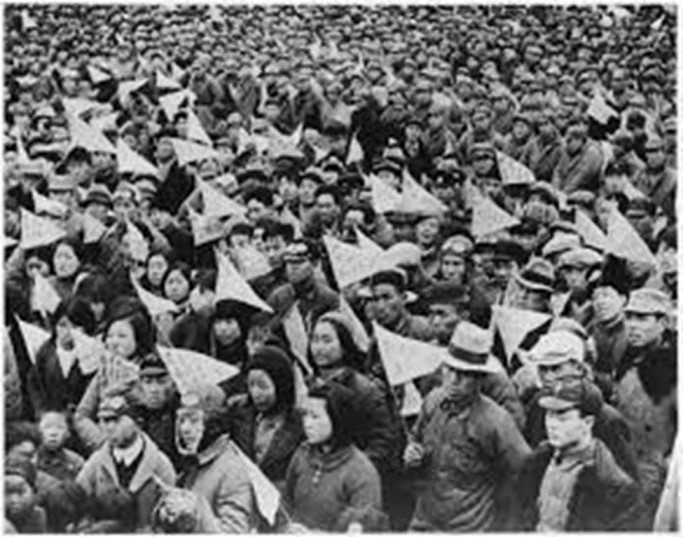
Both Tibetans and foreigners have observed the disappearance of wildlife native to Tibet. The first Western visitors to the country frequently commented on the extent and variety of Tibetan wildlife. Some of this wildlife, such as the wild yak, snow leopard, black-necked crane, Tibetan antelope, and Tibetan gazelle, is unique to Tibet or the Himalayan region. A wide range of habitats harbor an estimated 10,000 species of plants, a quarter of which are native only to Tibet. Many are of potential economic value, including 1,000 species of medicinal herbs[5].
[1] http://www.thetibetpost.com/en/outlook/opinions-and-columns/4643-china-is-guilty-of-mass-genocide-against-12-million-people-of-tibet
[2] https://www.foxnews.com/world/cultural-genocide-what-china-tibet-today
[3] https://www.washingtonpost.com/archive/opinions/1998/01/25/genocide-in-tibet/27c0891c-57f1-4a7c-b873-a1071d93cbfd/
[4] https://www.minnpost.com/community-voices/2020/09/china-tibet-and-the-uighurs-a-pattern-of-genocide/
[5] The Scorched Earth China’s Assault on Tibet’s Environment (multinationalmonitor.org)You may also access this article through our web-site http://www.lokvani.com/




